New Brunswick & Nova Scotia
Today’s post includes photographs from our first stops in Canada, at two ports in the Atlantic Provinces, St. John, NB and Halifax, NS. I will share photographs from Québec and Corner Brook NL in a following post.
This first picture was taken as we approached the St. John harbour. The yellow boat is bringing a local pilot, familiar with these waters to guide our ship into port. Interestingly, there is another cruise ship, already berthed in the harbour. St. John has encouraged growth of the cruise industry as part of its economy. They have developed the infrastructure to support these visits and successfully promoted the city as a cruise destination.
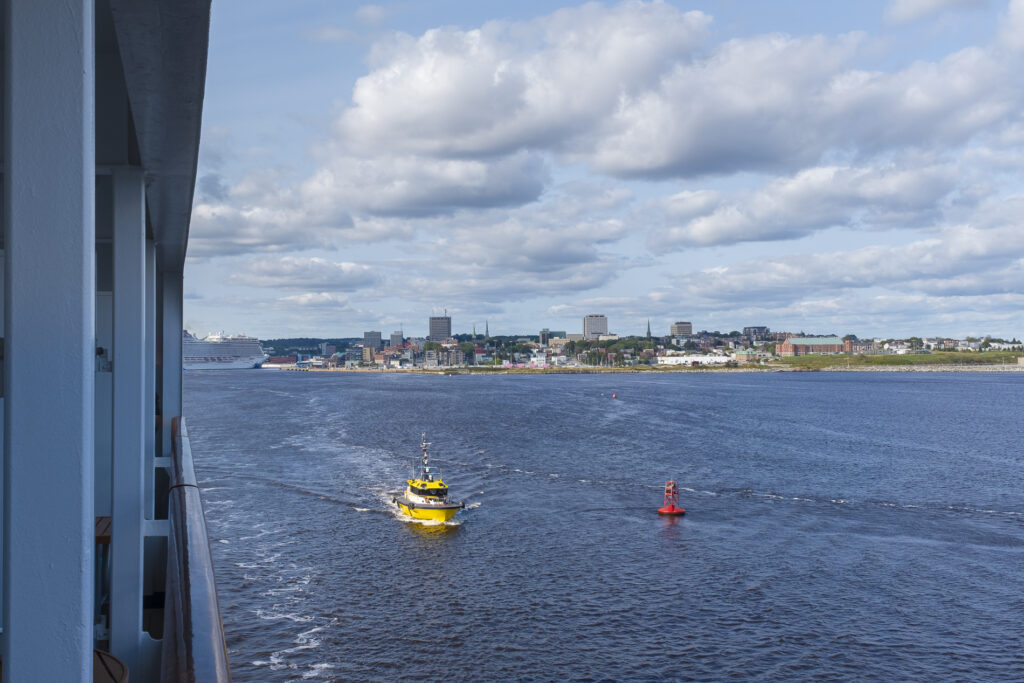
St. John has also developed a container port, the largest in Atlantic Canada, handling over 28 million tonnes of cargo annually. That places it ahead of the ports in Halifax, NS and St. John’s, NL.
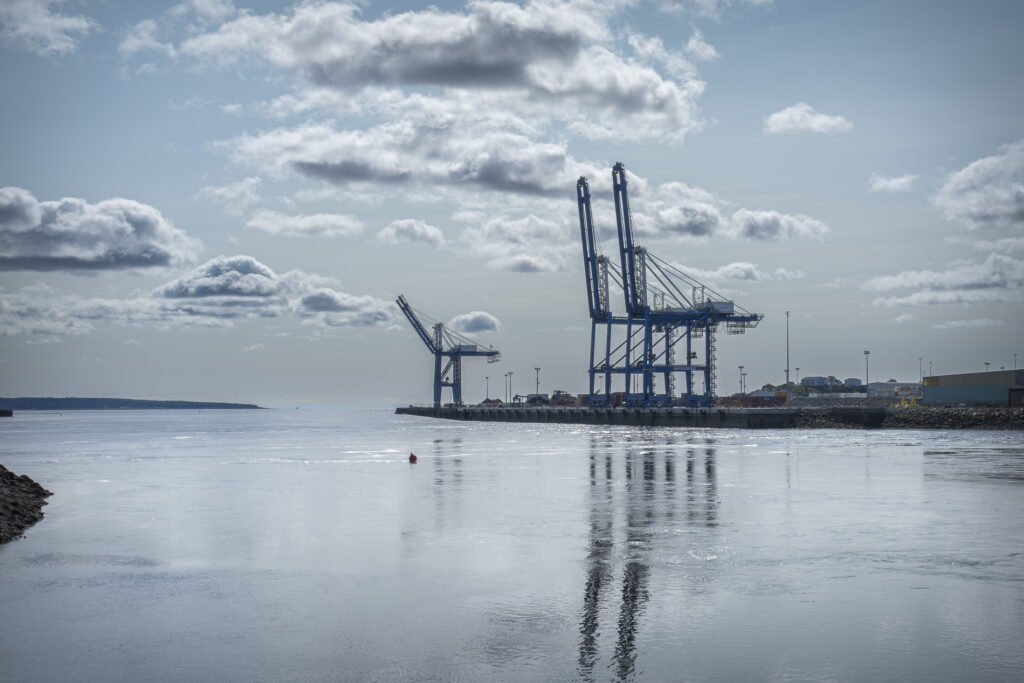
One of St. John’s most popular attractions is the reversing falls. That name is derived from the phenomenon of the semidiurnal tides in the Bay of Fundy, overwhelming and reversing the flow of the St. John River back upstream. The Bay of Fundy has the highest tides in the world, and those enormous tides alone make the Bay of Fundy one of the world’s greatest natural wonders.
Our tour guide timed our visit to the reversing falls (actually rapids) as the tide turned and the river resumed its flow into the Bay of Fundy.
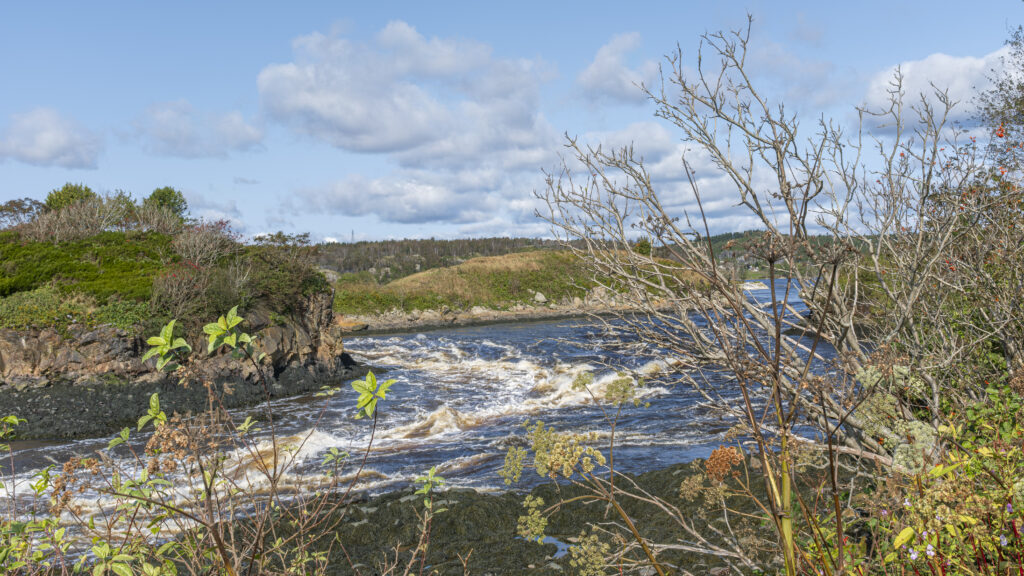
At our next stop, Halifax we boarded a bus for Peggy’s Cove, one of Nova Scotia’s premier tourist attractions. This picture features the lighthouse on the point, at the entry to the cove’s harbour.
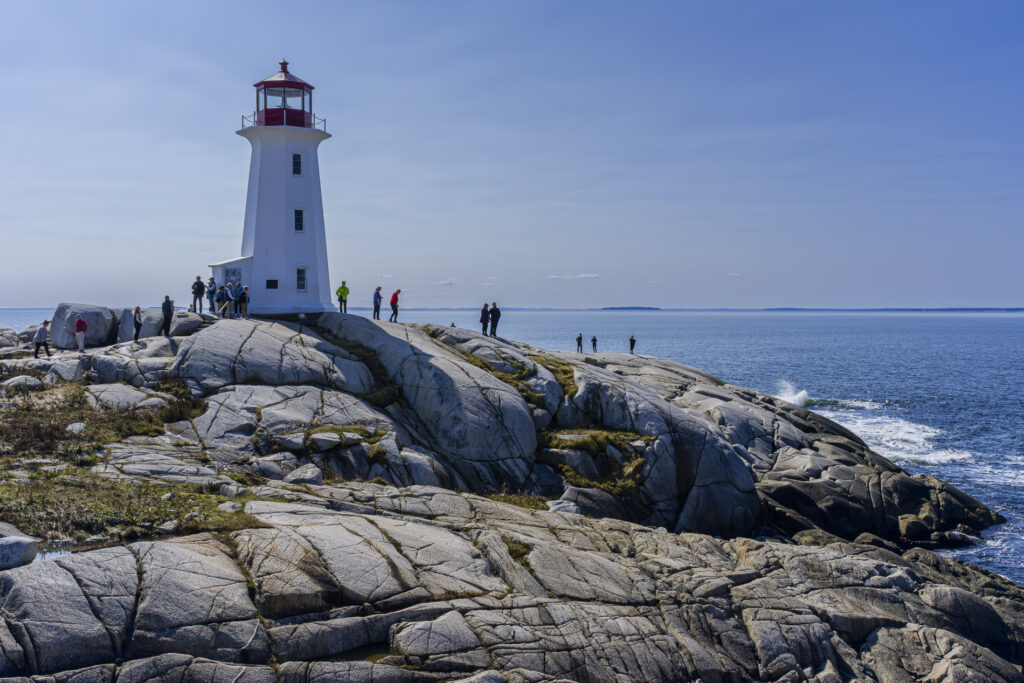
I took this photograph from the opposite end of the village’s harbour, the exit/entry. The harbour is home to the village’s fishing fleet, typical of many other such villages along the Atlantic coast.
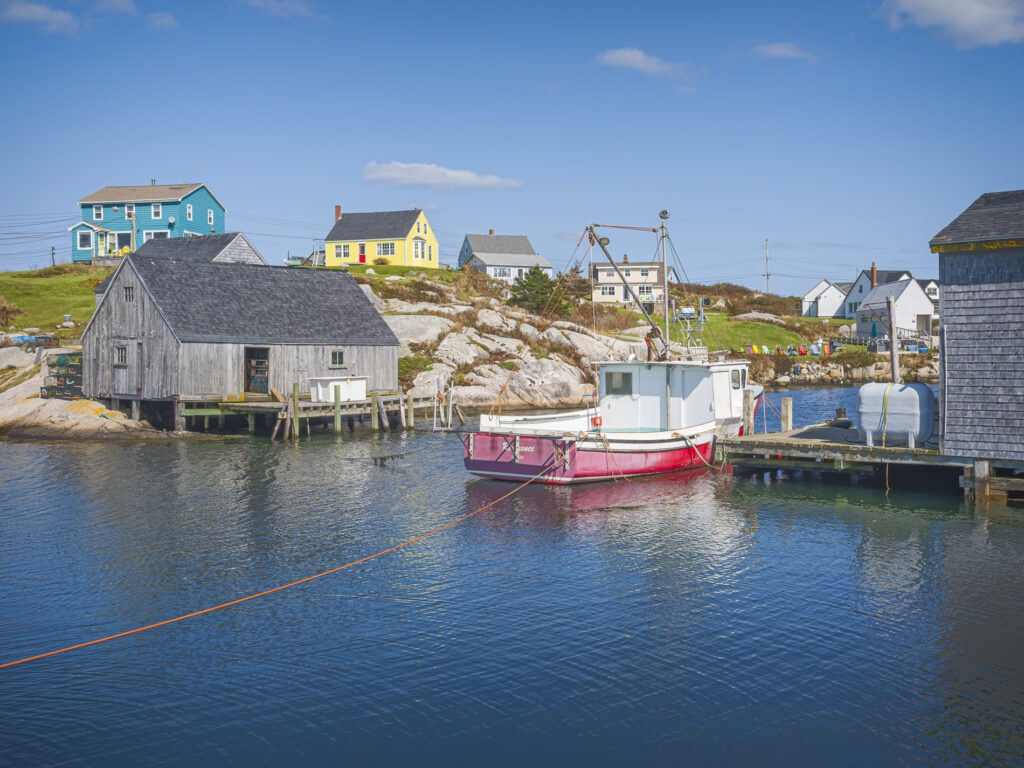
After Halifax, we cruised overnight to Sydney, Nova Scotia at the northern end of Cape Breton Island. Our excursion for that day was to the Highland Village Museum at the village of Iona, NS. This museum tracks the history of Scottish settlement in the area, using exhibits of the settlers’ habitations over time to demonstrate the evolution of Cape Breton Society. As our guide described it, “A walk through time”.
Our first stop was a Blackhouse, the traditional type of dwelling where the Scots would have lived in the Scottish Highlands. The walls are of stone with a thatched roof. The floor is packed earth and a hearth occupies the middle of the house for cooking and heat.
The Blackhouse at the Highland Village is the first building visited on the tour. Costumed animators inside the house and the ones we subsequently visited, describe how the Scots lived at different points in time.
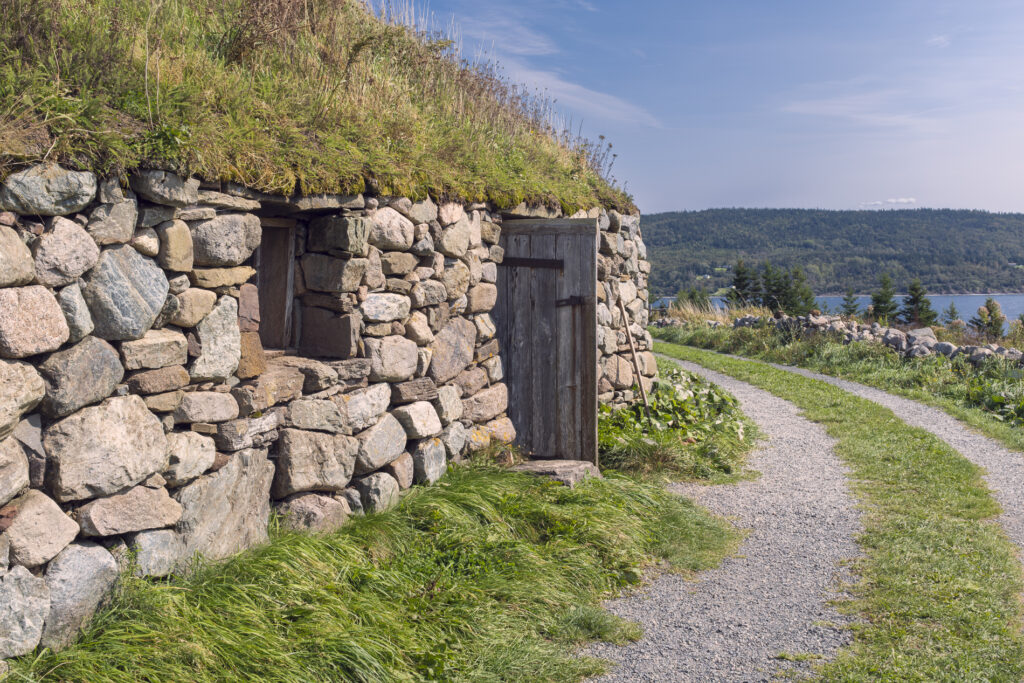
The white Pioneer Church from the 19th century has a central location at the top of the hill. It can be viewed from a distance and is seen as a symbol of the village. Small concerts are held in the church throughout the season. Faith was a large part of the Scots’ lifestyle and they brought it with them to the new home in Nova Scotia.
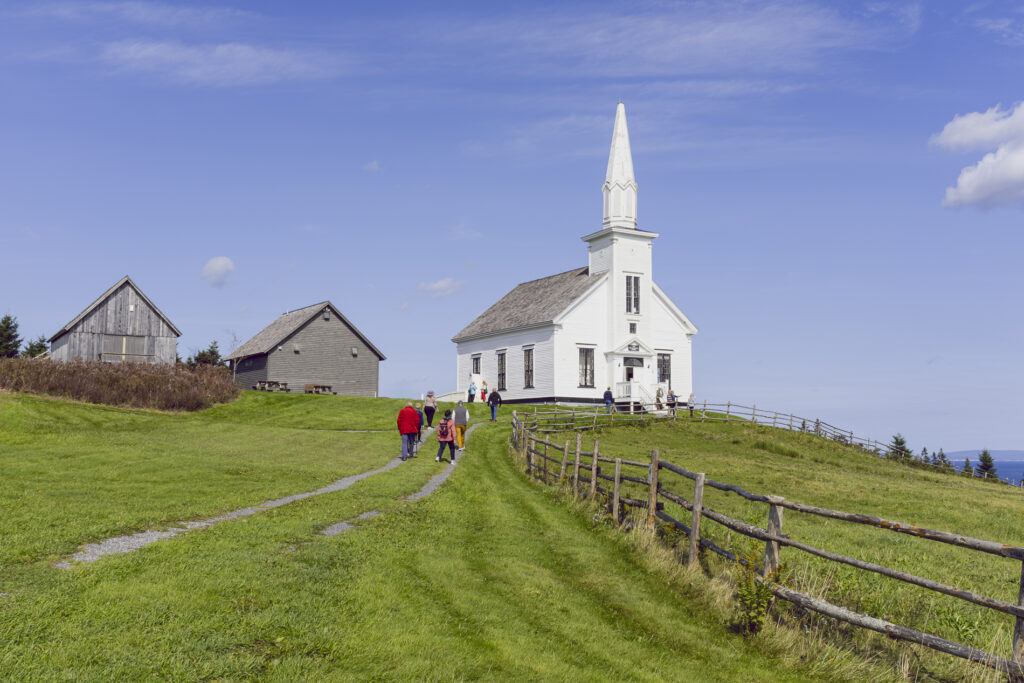
It was a long bus tour and we were happy to rejoin our ship for the overnight cruise to Corner Brook NL, our last stop in Atlantic Canada.
